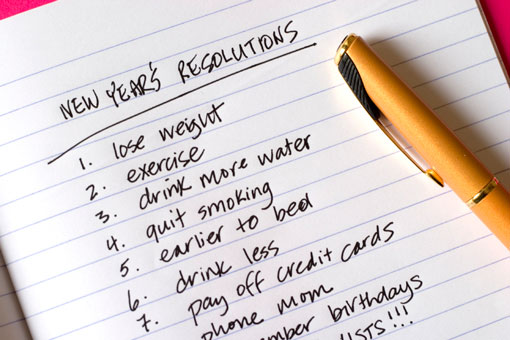5 Fail-Proof Steps to Lose Weight in the New Year

1. Eat More Vegetables
How: Eat one extra serving of vegetables every day. Choose a non-starchy vegetable, such as lettuce, zucchini, cauliflower, mushrooms, tomatoes, or green beans. Have your extra vegetable serving cooked or raw, as you choose, and on the side or inside a main dish, such as adding mushrooms to a salad or spinach to an omelet.
Why It Works: Unlike many weight loss tips, this one does not require you to cut anything out – just to add something. Vegetables are low in calories and filling, so adding one into your regular daily routine can help you stay full while you lose weight. It may even decrease your appetite for higher-calorie foods.
2. Take 10% Less.
How: Serve yourself 10% less than you had planned for each food that you serve yourself. The exception: non-starchy vegetables. If calculating 10% is too much trouble, just estimate. This is one time when it’s okay to eyeball it, as long as you measured the full serving accurately.
Why It Works: Simply enough, eating less helps you lose more. You will barely notice the difference on your plate when you take off 90%, but your body will notice the difference.
3. Get out of Breath.
How: Add some high-intensity periods of exercise within your usual routine. It could be some faster walking during your regular walk, higher resistance pedaling on the bike, or jumping jacks between sets while lifting weights f you are not yet exercising regularly, getting out of breath by walking further in the parking lot or taking the stairs can work.
Why It Works: Adding high-intensity bursts of exercise can drive up your calorie burn, which boosts weight loss. You will also feel better and may be more motivated to keep up the good work.
4. Walk after Dinner.
How: Go for a walk after dinner. It can be as short as a few minutes, and can be anything from a leisurely stroll to a brisk power-walk.
Why It Works: You will burn a few calories on your walk that will add up over the course of the year. You might also find yourself eating less at dinner because you do not want to feel overfull while walking or because you are rushing to get out the door for your walk.
5. Make a Change.
How: Every day, make it a point to make a minor swap in your menu. Choose something that is a little lower in calories or higher in protein or fiber than you otherwise would have, or add a little less to a recipe. Examples include using egg whites instead of egg, having an omelet with ham or cheese instead of both, and having only half of your salad dressing.
Why It Works: Each little change helps you cut calories and/or feel more full so you find it easier to eat less. Again, the changes add up over the course of a year.

